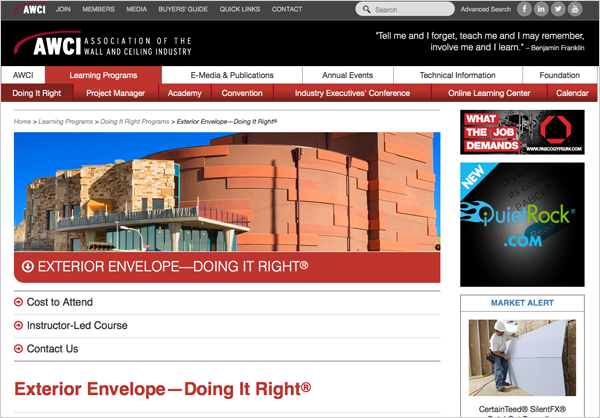Exterior Envelope
The heightened awareness of energy conservation in the built environment has made the design and construction of the exterior envelope one of the more challenging components of the building itself. Traditional building materials are combining with new technologies to create more energy efficient structures. The proper design of an exterior wall system includes careful consideration of fire resistance, acoustical performance, moisture resistance, impact resistance, structural integrity, and finally the desired aesthetics. The International Energy Conservation Code looks at the entire exterior skin, roof, walls, foundations, and sub-grade floors as one continuous element, without any breaks. Further, it defines a building thermal envelope as “The basement walls, exterior walls, floor, roof, and any other building elements that enclose conditioned space or provides a boundary between conditioned space and exempt or unconditioned space. ” This section is devoted specifically to establishing energy code compliant exterior walls with wall systems typically installed by AWCI contractor members. Also, there will be special emphasis on maintaining the continuity of the building thermal envelope through transitions in cladding, and building elements.
” This section is devoted specifically to establishing energy code compliant exterior walls with wall systems typically installed by AWCI contractor members. Also, there will be special emphasis on maintaining the continuity of the building thermal envelope through transitions in cladding, and building elements.
Those who are seeking more information on these types of walls are encourage to participate in one of the many AWCI Exterior Envelope – Doing It Right® programs. This one-day face-to-face training program is offered throughout the year. More information on the program can be found at AWCI Exterior Envelope—Doing It Right®.
